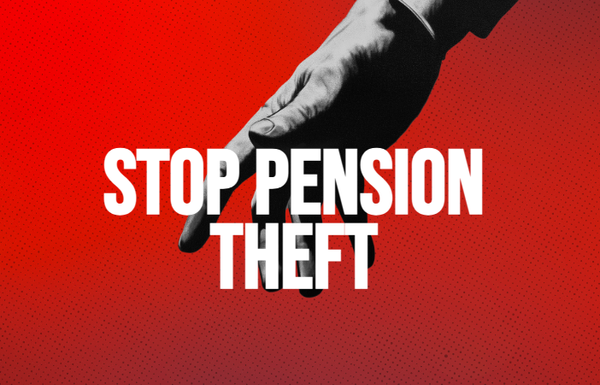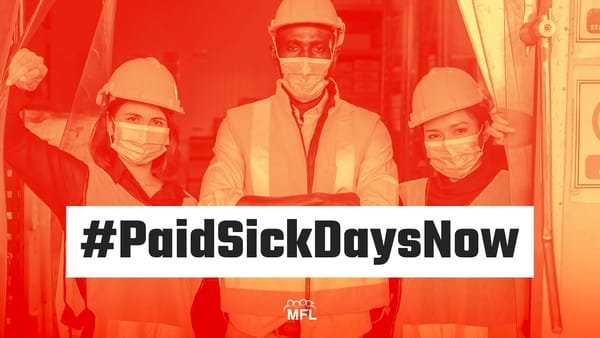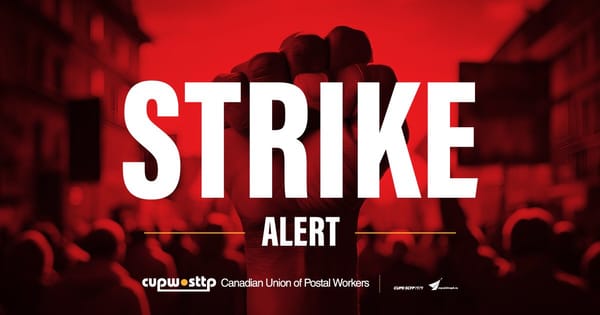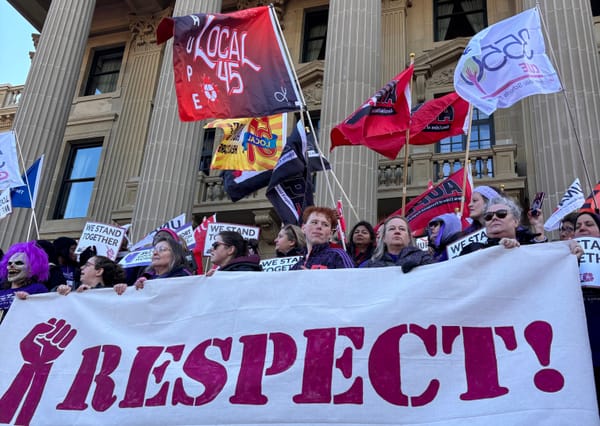
Those of us who follow the labour beat closely are accustomed to bad news. But I doubt even keen observers were fully prepared for the shocking wave of regressive state-level legislation proposed or enacted over the past year or so in the United States. Across the country, state legislatures are gutting child labour protections and making it easier for companies to employ youth — mostly immigrant youth — in extremely dangerous jobs.
A new report from the Economic Policy Institute (EPI) found that the employment of children in violation of federal child labour laws has increased by 37 per cent in the last year and 283 per cent over 2015, while at least 10 states have introduced or passed legislation rolling back state-level child labour protections in the past two years.
This year alone, seven bills weakening child labour protections have been introduced across six Midwestern states. In one of the most provocative and dangerous cases, Arkansas’ HB1410 removes the requirement that employers verify that children seeking employment are at least 16 years old or have parental consent to work. A spokesperson for governor Sarah Huckabee Sanders, Donald Trump’s former press secretary, described age verification requirements as “burdensome and obsolete.”
In June, Iowa passed a sweeping rewrite of the state’s child labour legislation. The bill, SF 167: allows employers to hire teens as young as 14 to work in hazardous jobs; extends maximum working hours, including for night work; waives restrictions on employing 16 and 17 year olds in a long list of dangerous jobs, such as construction, demolition, and excavation; and allows teens as young as 16 to serve alcohol in restaurants. Most shockingly, the law limits state agencies from imposing fines or penalties on employers who violate the law and exempts bosses from liability when young workers are injured or killed on the job, so long as the youth is engaged in so-called “work-based learning.”
In Nebraska, lawmakers have moved to lower wage rates for young workers. In 2022, voters passed a state ballot measure to raise the minimum wage to $15 per hour by 2026. The new bill would see 14 to 17 year olds paid a sub-minimum wage of $9 per hour, rising to $10 in 2026. If passed, the law would also allow employers to pay 18 to 20-year-old workers a “training wage” of $9.25 per hour through 2024 going up to $10 per hour in 2026, and permanently set this rate at 75 per cent of the minimum wage as of 2027.
According to the EPI, a network of industry-funded, right-leaning political associations have engaged in a concerted lobbying and pressure campaign with the aim of attacking and gutting child labour laws across the U.S. The report’s authors write: “Across the country, the primary proponents of these laws are business groups and their state affiliates, particularly the National Federation of Independent Business, the Chamber of Commerce, and the National Restaurant Association.”
However, in some states organized labour and young workers have fought back. In Virginia, HB 1669 would have created a $9 youth sub-minimum wage, cutting the pay of workers under 18 years of age by $3 per hour. In response, young workers organized through the Coalition for Virginia’s Future, a multi-issue, youth-led organization, and managed to stop the bill.
Proponents of relaxing child labour protections cite overburdensome regulation and expanding “opportunities” for young workers as their primary legislative motivations. The workplace risks to which young workers are exposed barely register. This might have something to do with who experiences the brunt of that risk. Overwhelmingly, these are migrant children.
As the EPI notes, “Recent DOL cases and media reports make clear that unaccompanied migrant youth left in limbo by a broken U.S. immigration system have become particularly vulnerable to exploitation by employers and networks of labor brokers and staffing agencies who recruit workers on their behalf.” Those caught in the bureaucracy of the American immigration system — many entering the country through irregular channels and/or awaiting asylum claims — are ineligible for work permits, often pushing them into precarious employment situations. Unscrupulous employers and labour contractors take advantage of these young peoples’ precarious citizenship status and engage their labour illegally.
Investigative reporting in The New York Times by Hannah Dreier reveals the extent to which state and federal agencies have been either unable or unwilling to adequately deal with the widespread labour exploitation and abuse of migrant youth. As of February 2023, the U.S. Department of Labor was investigating more than 600 cases of child labour law violations. Yet these are likely only a small fraction of violations, as most go unreported.
In an especially egregious case, the DOL found that Packers Sanitation Services Inc., a food sanitation services contractor, had illegally employed more than 100 children in hazardous occupations at 13 meat-packing facilities owned by the biggest firms in the industry, JBS, Cargill and Tyson. These mostly migrant children regularly worked overnight shifts performing dangerous work, such as cleaning saws and other high-risk equipment used in slaughterhouses. The DOL fined the company $1.5 million for illegally employing children and exposing them to workplace hazards.
In May, the Department of Labor fined three McDonald’s franchisees operating 62 locations of the fast-food giant more than $212,000 for employing 305 minors, some as young as 10 years old, and allowing those of legal age to work excessive hours. Late last year, multiple factories in Hyundai’s supply chain came under investigation for allegations of child labour in their Alabama facilities.
The Biden Adminstration has committed greater resources through the Labor Department and the Department of Health and Human Services in an effort to crack down on illegal child labour. However, with many Republican state legislatures working at cross-purposes and rolling back protective laws, the federal labour inspectorate finds itself in a Sisyphean battle.
Many of the new state laws relaxing child labour rules in fact contradict and conflict with stronger federal labour law. Unlike in Canada, where “interjurisdictional immunity” holds that federal and provincial laws do not overlap, federal labour standards in the U.S. set a national floor. States may pass laws that improve standards beyond those provided in the federal Fair Labor Standards Act (FLSA), but they are not technically permitted to pass laws undermining federal provisions.
However, states are utilizing a legislative gap to deliberately pry open the national regulatory framework governing child labour in the U.S.
The FLSA exempts certain private businesses with annual revenues of less than $500,000 from coverage. Provisions related to pay rates and working time, as well as minimum age of employment rules, consequently don’t cover employees of exempted businesses. States rolling back child labour rules are directing their legislative ‘reforms’ at FLSA exempt businesses, while knowing full well that child labour utilization is likely to increase among low-wage employers across the economy. An underfunded and overstretched federal inspectorate will be structurally unable to respond. If the use of child labour becomes widespread enough, across many state jurisdictions, states will have a greater case for weakening federal law to bring child labour regulations in line with the ‘facts on the ground.’
As the EPI report further points out, “Creating additional discrepancies between state and federal labor standards (which already involve a complex patchwork of rules and coverage guidelines within and across states) also makes it more difficult for workers to understand their rights and for employers to understand their legal obligations, increasing the likelihood that some employers will inadvertently violate federal prohibitions against employment of minors by following state guidelines that are inconsistent with FLSA requirements.”
As is well recognized, hazardous work can be more harmful to youth than adults. Excessive work hours not only undermine young peoples’ educational trajectory but also pose serious risks to their physical and mental health and development.
The declining youth labour force participation rate over the past several decades is the result of greater numbers of young people continuing both secondary and post-secondary education. In fact, as the EPI notes, nearly all of the decline in youth labour force participation since 2001 is the result of young people “prioritizing education and training over work.” This is a positive development, not something to bemoan or reverse. Higher levels of education are associated with greater skills acquisition and higher pay.
Thankfully, in Canada laws preventing child labour exploitation are generally stronger and better enforced. However, as with all employment standards and labour laws, protections are uneven across the many federal, provincial and territorial jurisdictions in Canada. Recently, the federal government raised the minimum age of employment in federally regulated businesses to 18 years for a list of hazardous jobs and placed greater onus on employers to verify workers’ ages. At the other end of the spectrum, Alberta — the province with the weakest child labour laws — allows 13- and 14-year-old children to work in an “approved list” of jobs, which the United Conservative Party government expanded in 2020.
Canada has ratified International Labour Organization (ILO) convention 138, which commits countries to a minimum age of employment of 15 years. Maintaining our commitments to c. 138 is difficult when some provincial jurisdictions maintain laws and regulations much weaker than the ILO standard, however.
The legislative prescription for protecting young workers across North America is no mystery. Young workers need strong minimum wage protections and the elimination of sub-minimum wage rates. They need strong labour standards enforcement and protections from dangerous work. Gaining ‘work experience’ shouldn’t be an excuse to limit the rights of working youth.
Most of all, like all workers, young people should be able to easily form or join unions. Collective organization is the best way to ensure young workers are protected and have a voice on the job.
Recent Class Struggle Issues
- July 4 | The Level Of Workplace Stress Should Be Considered A National Crisis
- June 26 | Reviewing The State Of The Labour Market – May 2023
- June 19 | Exploring The Unique Challenges LGBTQ+ Workers Face
- June 12 | A New App May Allow Workers To Unionize Anonymously








Member discussion